Have you ever wondered why your blood sugar falls during certain types of exercise whilst increasing during and types of exercise? Or why you sometimes get high blood sugars after exercise?
If you’re curious about the scientific explanation of how exercise can raise blood sugar, read on.
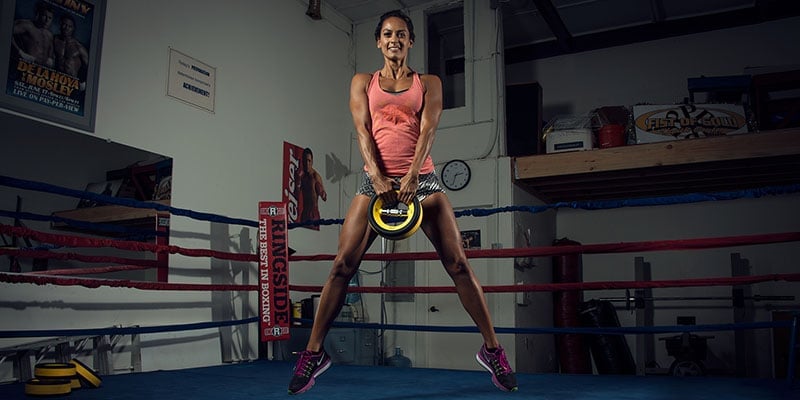
I rarely come across scientific studies that explore how exercise affects blood sugar in people living with type 1 diabetes, so when I recently got my hands on just such a research paper, I dug in with great interest (they specified type 1 diabetes, but I would think that the results are applicable to anybody using insulin).
Well actually, Google and I dug in. This research paper is heavy reading. You know those scientific papers where you feel like you need an advanced degree (plus a whole lot of Googling) just to understand the introduction? This is one of them.
The paper is titled “Effect of intermittent high-intensity compared with continuous moderate exercise on glucose production and utilization in individuals with type 1 diabetes”, and is written by a team of scientists from Australia. It was published in the American Journal of Physiology – Endocrinology and Metabolism in 2007 (not exactly new research, but peer-reviewed research nonetheless, which means it’s legit).
I thought that the subject was relevant and interesting enough to spend the time reading and understanding it. So, since I’ve done the heavy reading, let me share what I’ve learned with you.
Exercise and blood sugar impact
So why do some types of exercise make our blood sugar drop like crazy while others make it increase or hardly have any impact? I know from my own experience that I really have to watch my blood sugars if I do steady-state cardio, while an interval training session will have little impact or even make my blood sugars go up.
It turns out that the main reason why interval training won’t make your sugars drop as much as steady-state cardio comes down to two factors.
- Increase in glucose production
- Glucose utilization
Both of these factors are affected by exercise, regardless of the type of exercise you do. However, the scientists found that after 15 minutes, there was a statistically significant difference in the two factors depending on whether the test subjects did interval training or steady-state cardio.
They found an overall higher production of glucose, both during and up to 2 hours post-exercise in the test subjects that did interval training when compared to those doing steady-state cardio. Glucose utilization was also higher for the interval training group, but it never caught up with the glucose production.
This means that interval training has less of an impact on blood sugars (despite the interval training group putting in more overall work) than steady state cardiovascular training because your body is producing glucose as fast or faster than you can use it.
The scientists don’t know exactly why we see the greater increase in glucose production for interval training, but they theorized that it might be due to muscle glucagon breakdown.
Another finding was that cortisol (the stress hormone) didn’t increase more with interval training. That’s a really positive finding since increased cortisol isn’t something we generally strive for due to the many negative side effects such as weight gain, impaired immune function, and gastrointestinal problems.
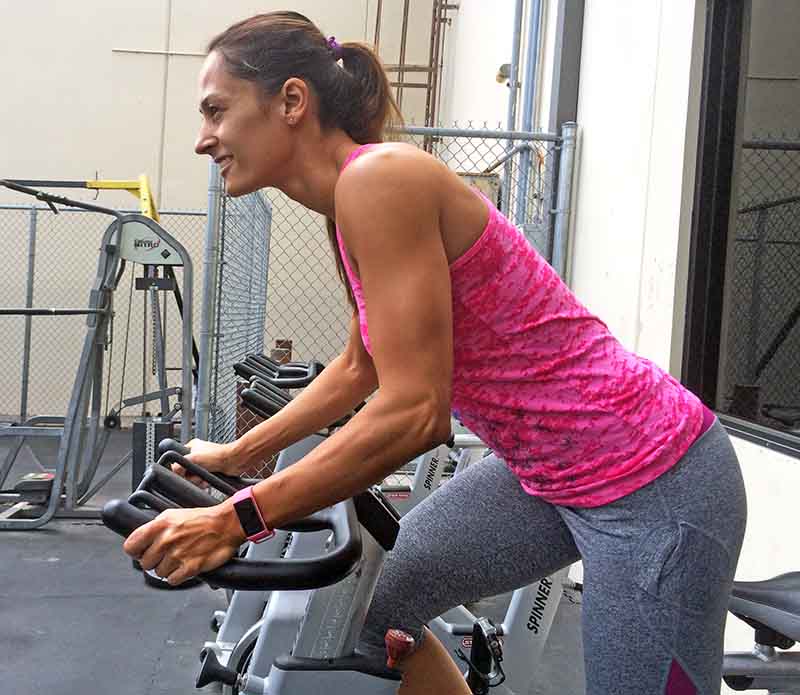
How to implement the research findings
Aside from me finding this super fascinating, what can we do with this information?
I think that this is a great piece of knowledge to have for trained athletes, those who are just starting out, and for parents managing their kid’s diabetes. It can serve as a guide when determining the amount of insulin and carbohydrates to safely administer prior to and post an activity.
The scientists compared interval training to sports like basketball and soccer where you have intense bursts of activity. I would add newer sports such as CrossFit, HIIT (high-intensity interval training) and HIT (high-intensity training). It could also be boot camps, spinning classes, or if you just do a lot of cardiovascular interval training and heavy resistance training.
Armed with this scientific knowledge (and a lot of experience), I know that I don’t need to reduce my insulin as much before and after an interval training or a resistance training session (I may even need a little extra insulin(!)), while I will need to make reductions if I do 40-60 minutes of steady state cardio.
For me, steady state cardio can be a long walk, a bike ride, or walking on an incline, Stairmaster or elliptical. With all of these activities, I’ll see an almost instant drop in blood sugars. However, the improved glucose utilization wears off pretty quickly after I stop exercising, so I know to lower my insulin prior to steady state cardio but not after.
To summarize:
- Exercise impacts BOTH glucose production and utilization
- When doing interval training, increased glucose production outpaces your increased glucose utilization
- When doing steady-state cardio, glucose utilization dominates production
- Because of this, your blood sugar may rise during and after high-intensity interval exercise, while it most likely will drop during steady-state cardio
You can read the full scientific paper here: Guelfi KJ, Ratnam N, Smythe GA, Jones TW, Fournier PA: “Effect of intermittent high-intensity compared with continuous moderate exercise on glucose production and utilization in individuals with type 1 diabetes”: Am J Physiol Endocrinol Metab. 2007 Mar;292(3):E865-70.

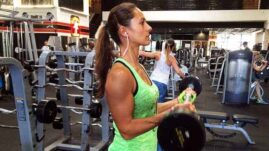
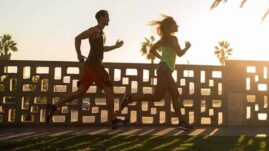
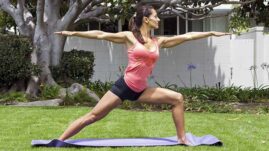
Hemant Tandon
Hi I have been a type 1 diabetic for 19 years now. I do weight training 5 days a week. I do my workouts in the morning, sometimes my blood sugar level before i begin my workout in the morning is 140-150, and 30-45 mins post my workout it is about 245. After which i take my medication and eat my breakfast which is eggs and milk, but soon after my breakfast the levels go as high as 300. How do i manage this?
Christel Oerum
I prefer to take my insulin before my workout to help prevent those pesky post-workout highs. You can also experiment with pre-bolusing earlier for your breakfast or maybe you’re simply not injecting enough insulin for the meal. You can discuss increasing your morning insulin with your doctor
kiran Temkar
My average A1C is 6.5. My age is 60.I do not take any meds by keep it under control mainly by eating just 1 meal a day at night and maybe some nuts through the day. Normally fasting sugar is 130 but due to fasting through the day A1C is 6.5.
I have started jumping rope around 30 mins everyday and noticed morning fasting sugar increase to 150.
I do not want to take meds.
Tracy
Ok, I have a son with T1D and is a wrestler in college. When he goes to tournaments sometimes his bs is fine other times it spikes clear up to 400. We never know what it’s going to do. Any suggestions?
Christel Oerum
I’m guessing there are patterns, but they can be hard to see. Try tracking food, sleep, timing, and IOB during tournaments and you most likely will start to see patterns. Until you find them you could consider mini-doses as soon as you see his blood sugars start to rise
angie
So my workout on my treadmill will raise sugar level, such I walk at a slower pace
Christel Oerum
I would expect that type of workout (aerobic) would decrease your blood sugars unless you start running sprints
Adrianne
I cannot tell you how enlightening this was. You just answered several years worth of confusion. I’ve been extremely frustrated trying to get my workouts in but haven’t found any other T1D’s who could explain. Thanks, again. Plan on trying to implement these changes.
Christel Oerum
I’m so glad you found us! This is something I hear very often, and every time I do a presentation on Exercise and Diabetes. Having this knowledge will make it much easier for you to be proactive in your diabetes management approach when exercising. All the best
Deb
I am a Zumba instructor. I have a heck of a time with highs after class.
Eg. I started a class today at 121. Sound system went down, so I had to cut class after 25 min. I got home 20 min later and my BS (deliberate pun) was 236. WHY??? I don’t get it! I have been dealing with this for several years.
I have been pretty sedentary the last eight weeks during shut down, but I have had many classes where I taught “fasted” “-no food-and had a spike like this. I have had a few classes where my BS tanked! I do not see a pattern.
Christel Oerum
I would experiment with adjusting your mid/end-workout IOB (active insulin on board).
Several things could be going on. Like today it sounds like you had the right amount of IOB for exercise but not enough for sitting around. On days where you fast your body is trying to help you get through the workout by releasing glucose. Both situations call for more IOB. But maybe only a little, you don’t want to end up going low
Mart
Great article. Quite enlightening so that one might be on the look out while exercising. Will also share with my friends
Marek
Hi Christel, very insightful article!
I’ve been type I for about a decade now and just started exercising on an stable routine since about November of last year. It’s a cardio routine I usually do for about 1-1.5 hours, 5 days a week. Normally, I actually cease all insulin delivery about 30 minutes prior to working out because I tend to drop about 60-100 with a simple basal, and this tends to minimize that to 10-30 max. I restart my basal about 15 minutes before the end of my workout and it’s been working really well for me. If I’m still relatively high from lunch (175-225ish) I’ll leave the basal on and I usually end up in a good spot by the end of the workout.
Lately (the past week-ish), however, my drops have almost ceased entirely aside from maybe the first 15 minutes of my workout, then my BG essentially flat-lines, and without a basal going I’m ending up high after my post-workout shower. The change has been rather jarring and I was really comfortable and happy with what I had going. Any idea what may be causing this change? I haven’t changed my diet but have started taking new medication which is not known to increase BG.
I’m certainly going to be bringing this up to my Endo when I see him next but I’d like to get your opinion on the matter, if possible.
Thanks!
Christel Oerum
It could be the medication, so I’d definitely have that conversation with your endo. It could also be that your body is adjusting to the type of exercise or (if you’re overall more insulin resistant) that you have a small infection.
As our bodies get conditioned for a certain type of exercise we’ll often see that our blood sugar response also changes. So you could try changing it up by changing the type or duration of your workout or simply restart your basal earlier
Sharon
I run marathons, teach 5 Step classes a week and just recently added leading a weightlifting class. I had a handle on all the blood sugar changes until I added the lifting class, after this class my sugars spike to almost 300 and it takes all day for me to get them to even come close to normal – it’s happened 4 times now. any suggestions???
thank you!
Christel Oerum
If you consistently see that you go low I’d consider having more IOB going during your lifting session. You can combine it with a meal before if you need the energy, with all your activity fueling enough must be hard
Michael Derrick
I Play tennis 5 to 6 days a week. some times 2 times a day. after playing my sugar is 250 or higher. it does go back down fairly fast with in an hour or so. my concern is how does this affect my A1C in the long run?
Christel Oerum
Since your A1C is an average of your blood sugar the last 3 months I personally don’t worry about the occasional high. However, if you playing tennis means you’re in the 200-range for several hours every day you might have to make some changes. It could be an adjustment of your medication or food before your tennis match. I think most people are over 200 ones a day, but there’s a big difference between a post-meal spike and a prolonged increase.
Overall though, most recommendations are to focus on your time in range rather than just your A1C in isolation (read more HERE).
Aaron
NB, the body doesn’t breakdown “muscle glucagon”; it breaks down muscle glycogen, but this won’t cause an increase in glucose production but represents increased glucose utilisation. Rather, hepatic glycogen depletion is responsible for blood sugar repletion.